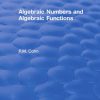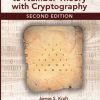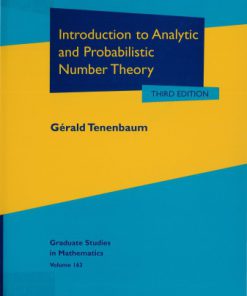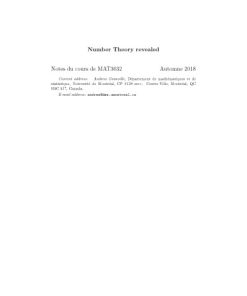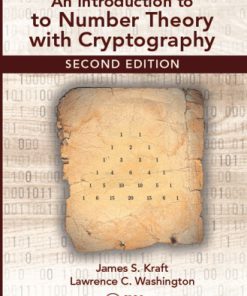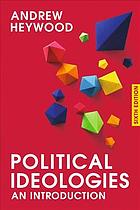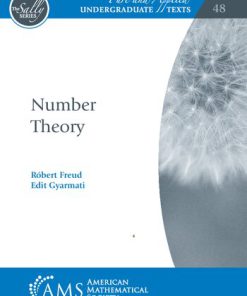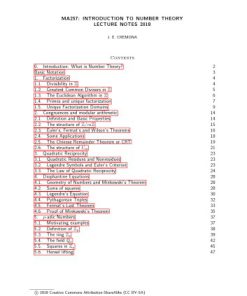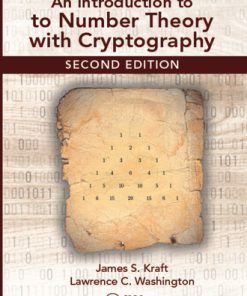Number Theory Revealed An Introduction 1st edition by Andrew 1470454238 9781470454234
$50.00 Original price was: $50.00.$25.00Current price is: $25.00.
Number Theory Revealed An Introduction 1st edition by Andrew Granville – Ebook Instant Download/Delivery ISBN(s): 1470454238, 9781470454234

Product details:
- ISBN 10: 1470454238
- ISBN 13: 9781470454234
- Author: Andrew Granville
Number Theory Revealed: An Introduction acquaints undergraduates with the “Queen of Mathematics”. The text offers a fresh take on congruences, power residues, quadratic residues, primes, and Diophantine equations and presents hot topics like cryptography, factoring, and primality testing. Students are also introduced to beautiful enlightening questions like the structure of Pascal’s triangle mod $p$ and modern twists on traditional questions like the values represented by binary quadratic forms and large solutions of equations. Each chapter includes an “elective appendix” with additional reading, projects, and references. An expanded edition, Number Theory Revealed: A Masterclass, offers a more comprehensive approach to these core topics and adds additional material in further chapters and appendices, allowing instructors to create an individualized course tailored to their own (and their students’) interests. About the Author: Andrew Granville is the Canada Research Chair in Number Theory at the University of Montreal and professor of mathematics at University College London. He has won several international writing prizes for exposition in mathematics, including the 2008 Chauvenet Prize and the 2019 Halmos-Ford Prize, and is the author of Prime Suspects (Princeton University Press, 2019), a beautifully illustrated graphic novel murder mystery that explores surprising connections between the anatomies of integers and of permutations.
Table of contents:
Chapter 1. The Euclidean algorithm
1.1. Finding the gcd
1.2. Linear combinations
1.3. The set of linear combinations of two integers
1.4. The least common multiple
1.5. Continued fractions
1.6. Tiling a rectangle with squares
Additional exercises
Divisors in recurrence sequences
Appendix 1A. Reformulating the Euclidean algorithm
1.8. Euclid matrices and Euclid’s algorithm
1.9. Euclid matrices and ideal transformations
1.10. The dynamics of the Euclidean algorithm
Chapter 2. Congruences
2.1. Basic congruences
2.2. The trouble with division
2.3. Congruences for polynomials
2.4. Tests for divisibility
Additional exercises
Binomial coefficients modulo 𝑝
The Fibonacci numbers modulo 𝑑
Appendix 2A. Congruences in the language of groups
2.6. Further discussion of the basic notion of congruence
2.7. Cosets of an additive group
2.8. A new family of rings and fields
2.9. The order of an element
Chapter 3. The basic algebra of number theory
3.1. The Fundamental Theorem of Arithmetic
3.2. Abstractions
3.3. Divisors using factorizations
3.4. Irrationality
3.5. Dividing in congruences
3.6. Linear equations in two unknowns
3.7. Congruences to several moduli
3.8. Square roots of 1 (mod 𝑛)
Additional exercises
Reference on the many proofs that √2 is irrational
Appendix 3A. Factoring binomial coefficients and Pascal’s triangle modulo 𝑝
3.10. The prime powers dividing a given binomial coefficient
3.11. Pascal’s triangle modulo 2
References for this chapter
Chapter 4. Multiplicative functions
4.1. Euler’s 𝜙-function
4.2. Perfect numbers. “The whole is equal to the sum of its parts.”
Additional exercises
Appendix 4A. More multiplicative functions
4.4. Summing multiplicative functions
4.5. Inclusion-exclusion and the Möbius function
4.6. Convolutions and the Möbius inversion formula
4.7. The Liouville function
Additional exercises
Chapter 5. The distribution of prime numbers
5.1. Proofs that there are infinitely many primes
5.2. Distinguishing primes
5.3. Primes in certain arithmetic progressions
5.4. How many primes are there up to 𝑥?
5.5. Bounds on the number of primes
5.6. Gaps between primes
Further reading on hot topics in this section
5.7. Formulas for primes
Additional exercises
Appendix 5A. Bertrand’s postulate and beyond
5.9. Bertrand’s postulate
5.10. The theorem of Sylvester and Schur
Bonus read: A review of prime problems
5.11. Prime problems
Prime values of polynomials in one variable
Prime values of polynomials in several variables
Goldbach’s conjecture and variants
Other questions
Guides to conjectures and the Green-Tao Theorem
Chapter 6. Diophantine problems
6.1. The Pythagorean equation
6.2. No solutions to a Diophantine equation through descent
No solutions through prime divisibility
No solutions through geometric descent
6.3. Fermat’s “infinite descent”
6.4. Fermat’s Last Theorem
A brief history of equation solving
References for this chapter
Additional exercises
Appendix 6A. Polynomial solutions of Diophantine equations
6.6. Fermat’s Last Theorem in ℂ[𝕥]
6.7. 𝑎+𝑏=𝑐 in ℂ[𝕥]
Chapter 7. Power residues
7.1. Generating the multiplicative group of residues
7.2. Fermat’s Little Theorem
7.3. Special primes and orders
7.4. Further observations
7.5. The number of elements of a given order, and primitive roots
7.6. Testing for composites, pseudoprimes, and Carmichael numbers
7.7. Divisibility tests, again
7.8. The decimal expansion of fractions
7.9. Primes in arithmetic progressions, revisited
References for this chapter
Additional exercises
Appendix 7A. Card shuffling and Fermat’s Little Theorem
7.11. Card shuffling and orders modulo 𝑛
7.12. The “necklace proof” of Fermat’s Little Theorem
More combinatorics and number theory
7.13. Taking powers efficiently
7.14. Running time: The desirability of polynomial time algorithms
Chapter 8. Quadratic residues
8.1. Squares modulo prime 𝑝
8.2. The quadratic character of a residue
8.3. The residue -1
8.4. The residue 2
8.5. The law of quadratic reciprocity
8.6. Proof of the law of quadratic reciprocity
8.7. The Jacobi symbol
8.8. The squares modulo 𝑚
Additional exercises
Further reading on Euclidean proofs
Appendix 8A. Eisenstein’s proof of quadratic reciprocity
8.10. Eisenstein’s elegant proof, 1844
Chapter 9. Quadratic equations
9.1. Sums of two squares
9.2. The values of 𝑥²+𝑑𝑦²
9.3. Is there a solution to a given quadratic equation?
9.4. Representation of integers by 𝑎𝑥²+𝑏𝑦² with 𝑥,𝑦 rational, and beyond
9.5. The failure of the local-global principle for quadratic equations in integers
9.6. Primes represented by 𝑥²+5𝑦²
Additional exercises
Appendix 9A. Proof of the local-global principle for quadratic equations
9.8. Lattices and quotients
9.9. A better proof of the local-global principle
Chapter 10. Square roots and factoring
10.1. Square roots modulo 𝑛
10.2. Cryptosystems
10.3. RSA
10.4. Certificates and the complexity classes P and NP
10.5. Polynomial time primality testing
10.6. Factoring methods
References: See [CP05] and [Knu98], as well as:
Additional exercises
Appendix 10A. Pseudoprime tests using square roots of 1
10.8. The difficulty of finding all square roots of 1
Chapter 11. Rational approximations to real numbers
11.1. The pigeonhole principle
11.2. Pell’s equation
11.3. Descent on solutions of 𝑥²-𝑑𝑦²=𝑛,𝑑>0
11.4. Transcendental numbers
11.5. The 𝑎𝑏𝑐-conjecture
Further reading for this chapter
Additional exercises
Appendix 11A. Uniform distribution
11.7. 𝑛𝛼 mod 1
11.8. Bouncing billiard balls
Chapter 12. Binary quadratic forms
12.1. Representation of integers by binary quadratic forms
12.2. Equivalence classes of binary quadratic forms
12.3. Congruence restrictions on the values of a binary quadratic form
12.4. Class numbers
12.5. Class number one
References for this chapter
Additional exercises
Appendix 12A. Composition rules: Gauss, Dirichlet, and Bhargava
12.7. Composition and Gauss
12.8. Dirichlet composition
12.9. Bhargava composition
People also search:
number theory revealed a masterclass pdf
number theory introduction
number theory revealed a masterclass
number theory a lively introduction pdf
number theory a lively introduction with proofs applications and stories
You may also like…
Mathematics Mathematics - Number Theory
Introduction to Analytic and Probabilistic Number Theory 3rd Edition Gerald Tenenbaum
Mathematics
Algebraic Number Theory A Brief Introduction 1st Edition by Chahal 0367761459 9780367761455
Politics & Philosophy - Social Sciences
Political ideologies an introduction 6th Edition by Andrew Heywood ISBN 9781137606013 978-1137606013
Mathematics - Number Theory
Mathematics - Number Theory
An Introduction to Number Theory with Cryptography, Second Edition Kraft


